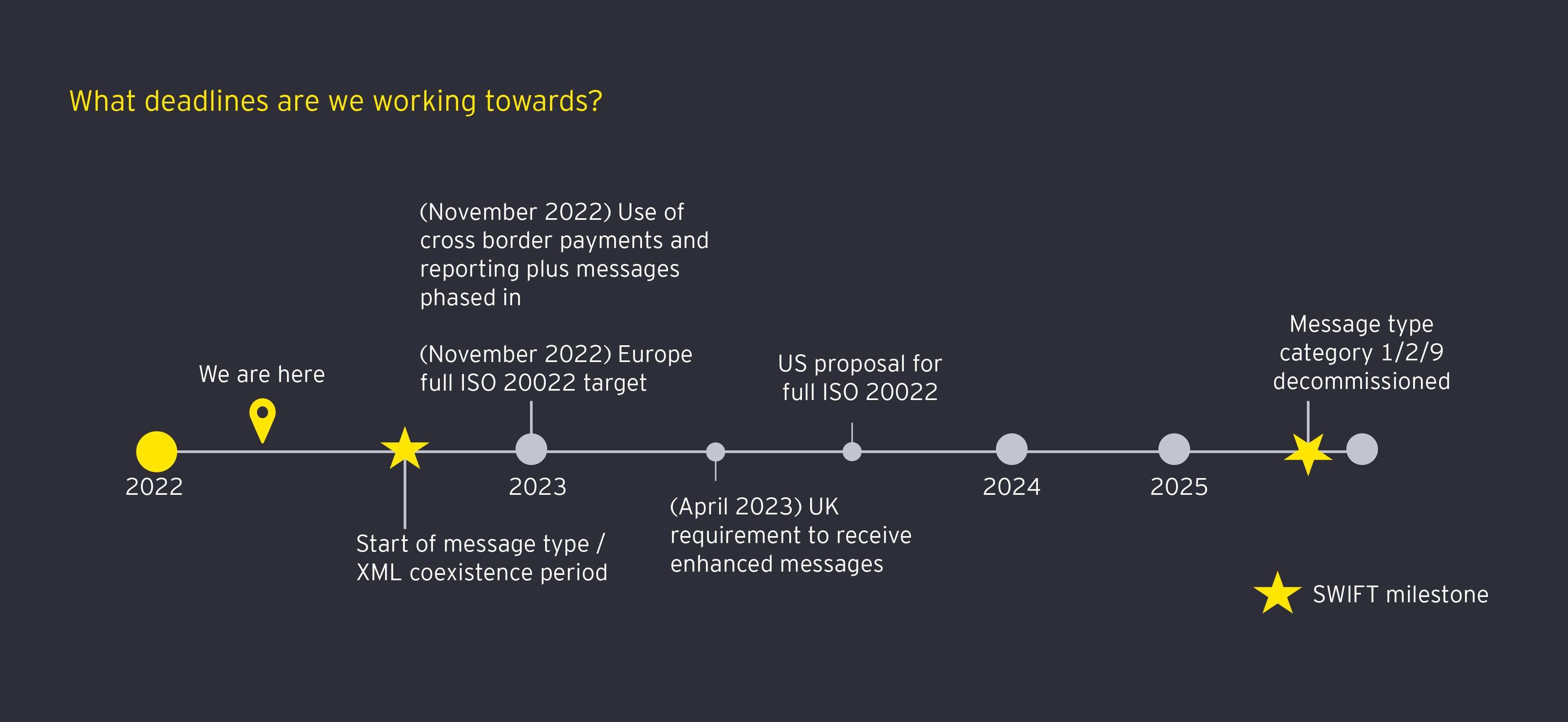EY refers to the global organization, and may refer to one or more, of the member firms of Ernst & Young Global Limited, each of which is a separate legal entity. Ernst & Young Global Limited, a UK company limited by guarantee, does not provide services to clients.
How EY can help
-
Our payments professionals can help your business enhance innovation, drive growth and improve performance. Find out more.
Read more
Having the right implementation playbook
There are some core aspects of the implementation process that impact all banks. Below are some of the key pressure points that we see clients currently face:
Program support
Given the complexity and wide use of payments messaging, banks need to ensure they have a fully established program that goes live on time. That means scoping, reviewing and updating their payments architecture, both from a technological but also a business perspective. For banks with cross-border footprints that becomes even more complex, given the differing deadlines across the main markets. Adding to the complexity, there are different implementation guidelines for different payment schemes.
Testing
As migration will now take place in Europe first, providers will need significantly more testing, as unlike the Bank of England, there is no regulatory sandbox in Europe. Banks will effectively be left to their own devices as they undertake testing.
Data and analytics
Data models within banks will change significantly with the move to the new standard. The opportunity for banks to enrich their analytics around this new data set is huge. However, this will need to be aligned with the bank’s existing global data strategy. Legacy systems typically can’t support the new standard, so banks will need to update or replace these, an expensive and complex process.
Talent
A significant shortage of talent will become a much greater problem as the market prepares for the same timelines. Retaining and recruiting people with the right skills will likely make a material difference to how successful a bank’s adaption to the new standard will be.
Corporate customers
The change to ISO 20022 impacts the whole payment system, including large corporates whose financial reporting system will be impacted. Banks will need to consider how best to communicate and align systems with customers. Corporates may use this opportunity to streamline and automate reconciliations currently requiring manual intervention. They may also consider strategic opportunities, such as going multi-banked, to reduce cost and improve resiliency.
A divergent picture
We are seeing some divergence in approach from banks, mainly linked to their market position within payments:
Global banks
Most accept this is a sea change in payments and they need to invest in changing their systems, but also use the new standard to provide better and more useful services for corporate customers.
Mid-tier banks
Those that are direct participants in the payments system are likely to be wary of the cost and lean toward a minimum compliance approach. They may potentially partner with FinTechs.
Regional and local banks
They are typically not direct participants in any of the market infrastructures. They are likely to be fast followers – they will not look to offer new products but will adapt once the standard is established. This is largely driven by the customer base and their expectations from those banks, as well as the cost that goes along with compliance.
Each bank will have its own challenges. We are already seeing different approaches in the market. Some are looking at a brand-new infrastructure to take advantage of the benefits of the new standard. Others are considering short-term fixes, like using translation to interpret messages sent and received in the new standard.






